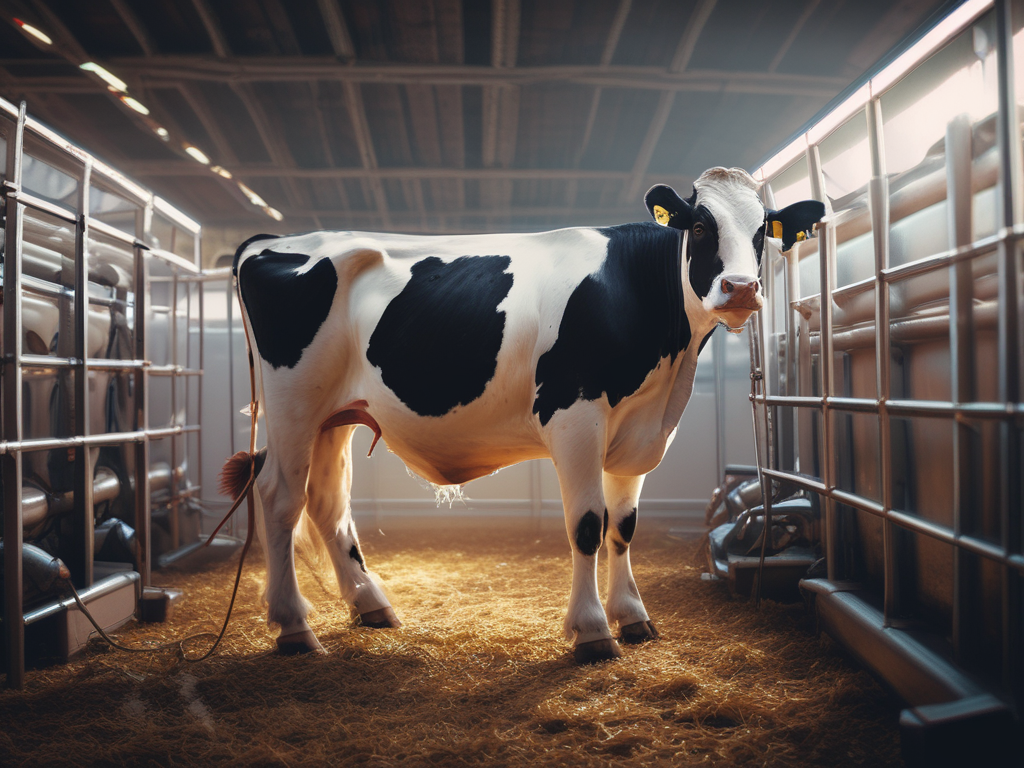Livestock farming, a cornerstone of global food production, is undergoing a transformation driven by innovative technologies. These advancements are not only improving efficiency and sustainability but also paving the way for a more profitable and resilient industry. For farmers in Nigeria and across Africa, embracing these innovations can lead to significant gains. Let’s explore the top 10 innovations revolutionizing livestock farming today.
1. Precision Livestock Farming (PLF)
Precision Livestock Farming utilizes sensors and data analytics to monitor the health, behavior, and productivity of animals in real time. By tracking parameters such as feeding patterns, movement, and vitals, farmers can make informed decisions that enhance animal welfare and boost productivity.
Examples:
- Ireland: The EU-funded PRECISION project implemented PLF technologies across several farms, focusing on monitoring dairy cow health and welfare. This resulted in improved milk yield and reduced veterinary costs.
- Netherlands: Dutch company Nedap offers livestock management systems that use sensors to monitor the health and productivity of animals. Farmers using Nedap’s technology have reported significant improvements in herd management and productivity.
2. Automated Feeding Systems
Automated feeding systems ensure that livestock receive the right amount of feed at the right time. These systems reduce waste, optimize growth rates, and minimize labor costs.
Examples:
- Germany: Lely, a German company, provides automated feeding systems widely adopted across Europe. Farmers using Lely’s Vector feeding system report up to 15% feed savings and improved livestock growth rates.
- Canada: GEA Group’s automated feeding systems are used on dairy farms, leading to optimized feeding schedules and better milk production.
3. Genomic Selection and Breeding
Genomic selection involves using DNA analysis to identify the best animals for breeding. This technology accelerates genetic improvement, leading to healthier and more productive livestock.
Examples:
- United States: The USDA’s National Animal Germplasm Program uses genomic selection to enhance the genetic traits of cattle, leading to improved beef quality and production efficiency.
- Australia: The Australian Cooperative Research Centre for Sheep Industry Innovation has successfully used genomic selection to breed sheep with higher wool quality and disease resistance.
4. Blockchain for Supply Chain Transparency
Blockchain technology ensures transparency and traceability in the livestock supply chain. By recording every transaction on an immutable ledger, consumers can verify the origin and quality of their meat and dairy products.
Examples:
- Australia: BeefLedger tracks the entire beef supply chain from farm to consumer, ensuring transparency and improving consumer confidence.
- United States: Walmart has implemented blockchain technology to trace the origin of its meat products, ensuring quality and safety for consumers.
5. Robotic Milking Systems
Robotic milking systems automate the milking process, improving efficiency and animal comfort. These systems allow cows to be milked when they choose, reducing stress and increasing milk yield.
Examples:
- Netherlands: Lely’s Astronaut robotic milking system is used by dairy farms worldwide, including in the Netherlands, where farmers report increased milk yield and reduced labor costs.
- New Zealand: DeLaval’s VMS robotic milking systems are employed on dairy farms, enhancing productivity and animal welfare.
6. Insect Protein for Animal Feed
Insect protein is emerging as a sustainable alternative to traditional animal feed. High in nutrients and environmentally friendly, insect-based feed is gaining popularity.
Examples:
- Netherlands: Protix produces insect-based protein for animal feed, which is used by poultry and aquaculture farmers to reduce feed costs and improve sustainability.
- South Africa: AgriProtein converts organic waste into insect protein for livestock feed, offering a sustainable alternative to traditional feed sources.
7. Vertical Farming for Fodder Production
Vertical farming techniques are being adapted for fodder production, ensuring a consistent supply of high-quality feed regardless of weather conditions.
Examples:
- United Arab Emirates: Emirates Hydroponics Farms uses vertical farming techniques to produce fodder for livestock, ensuring a consistent supply of high-quality feed in arid conditions.
- Kenya: Hydroponic Africa produces hydroponic fodder systems that are used by Kenyan farmers to provide nutritious feed for their livestock year-round.
Conclusion
The livestock farming industry is on the brink of a technological revolution. By adopting these innovations, farmers in Nigeria and across Africa can enhance productivity, sustainability, and profitability. Staying ahead of these trends not only secures a competitive edge but also contributes to the broader goal of food security on the continent. Embrace these advancements and be part of the future of livestock farming.


